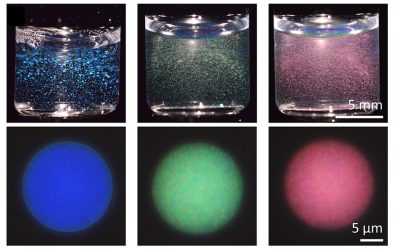New ultrathin, planar, lightweight, and broadband polarimetric photonic devices and optics could result from recent research by a team of Los Alamos National Laboratory scientists. The advances would boost security screening systems, infrared thermal cameras, energy harvesting, and radar systems.
This development is a key step toward replacing bulky conventional optics with flexible sheets that are about the thickness of a human hair and weighing a fraction of an ounce. The advance is in the design of artificially created materials, called metamaterials, that give scientists new levels of control over light wavelengths.
The team demonstrated broadband, high-performance linear polarization conversion using ultrathin planar metamaterials, enabling possible applications in the terahertz (THz) frequency regime. Their design can be scaled to other frequency ranges from the microwave through infrared.
Polarization is one of the basic properties of electromagnetic waves, describing the direction of the electric field oscillation, and thus conveying valuable information in signal transmission and sensitive measurements.
“Conventional methods for advanced polarization control impose very demanding requirements on material properties and fabrication methods, but they attain only limited performance,” said Hou-Tong Chen, the senior researcher on the project.
Metamaterial-based polarimetric devices are particularly attractive in the terahertz frequency range due to the lack of suitable natural materials for THz applications. Currently available designs suffer from either very limited bandwidth or high losses. The Los Alamos designs further enable the near-perfect realization of the generalized laws of reflection/refraction. According to the researchers, this can be exploited to make flat lenses, prisms, and other optical elements in a fashion very different from the curved, conventional designs that we use in our daily life.
Source: Los Alamos National Laboratory
















